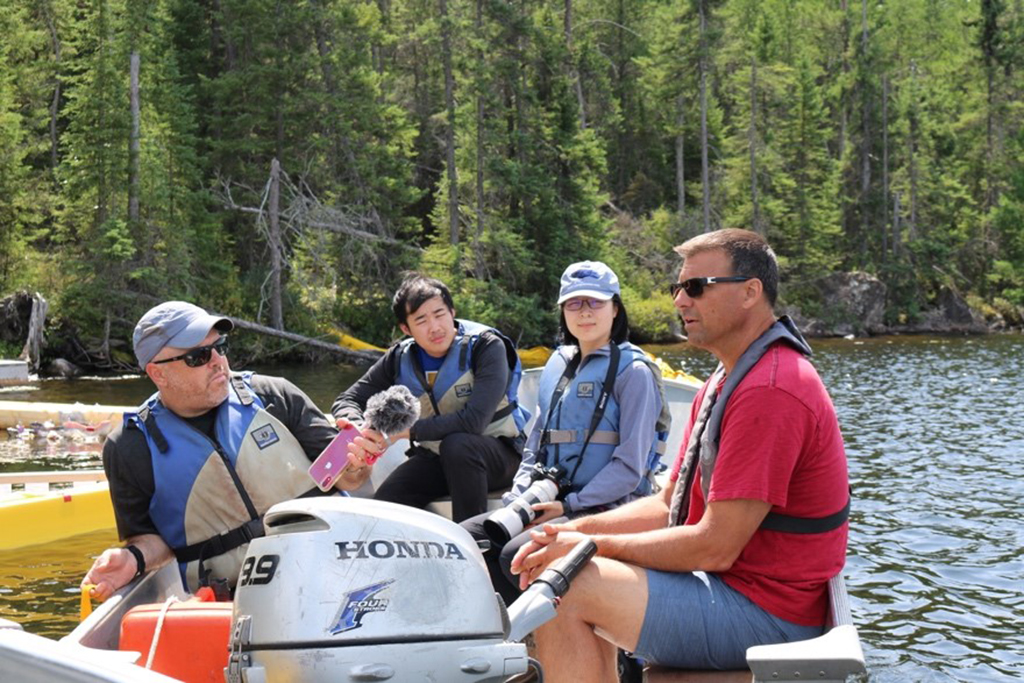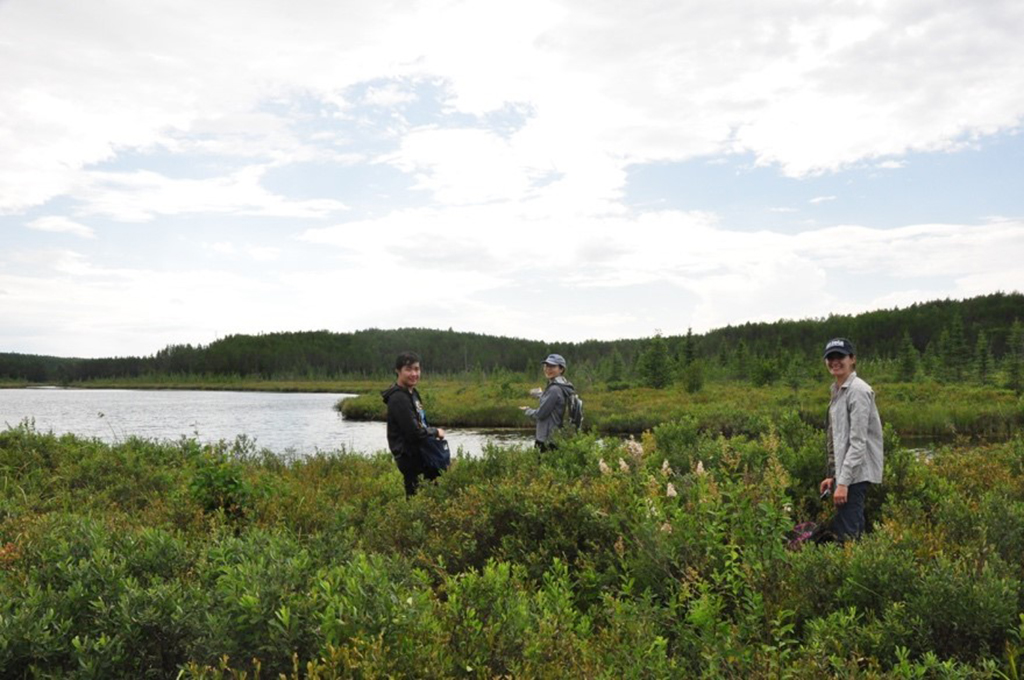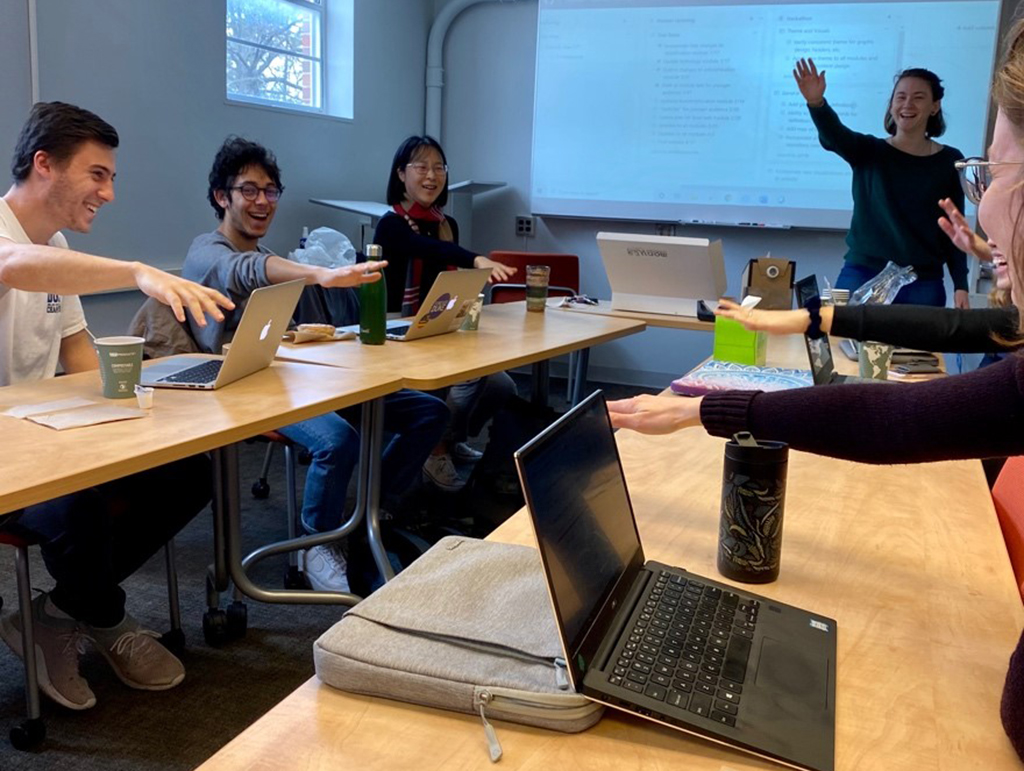How Freshwater Systems React to Stressors
Project Team

Team profile by Kim Bourne, Karen Jin, Sena McCrory, Henry Mukherji, Nick Peoples, Margaret Reed, Angel Shi and Vincent Wang
Freshwater resources have enormous value to society, but climate change and human population growth threaten the sustainability of these ecosystems. Long-term records and whole-ecosystem experiments show us how freshwater systems react to stressors, which can inform water quality management efforts. Research at the IISD-Experimental Lakes Area (IISD-ELA), now in its 52nd year, has produced ground-breaking research on the effects of stressors on lakes, including acidification, nutrient loading, climate change, and food web alterations. Data-enabled approaches present opportunities not only to advance aquatic science but also to illustrate the findings of lake research in new formats that are more widely accessible.

Our Bass Connections team worked to tell the stories of long-term monitoring and whole-ecosystem experiments at IISD-ELA in new ways for expanded audiences. We worked closely with the IISD-ELA outreach, education, and marketing staff to align their goals with our work. Most of our interactions with our Canadian collaborators were virtual, but our team took a field trip to the remote field station in August 2019 to see the science in action.


Much of our work as a team involved processing the large amounts of data making up IISD-ELA’s monitoring database and creating the basis of our online interactive website. In our final in-person meeting of spring 2020 (unbeknownst to us at the time!), these efforts culminated in a “hackathon,” where everyone congregated with coffee and donuts to finalize sections of our project website.

Our team produced three products, which will be used by IISD-ELA in their outreach and scientific efforts:
- An interactive website that enables users to explore the water cycle, food webs, and the effects of acidification, dam construction, and fertilization on lakes. Visit the website yourself to investigate these data stories. This website will be used by IISD-ELA as a tool for educational activities, allowing people to take a virtual visit to these lakes and immerse themselves in the history of long-term monitoring and iconic experiments.
- A podcast series, titled “Science Under the Surface”, where our teammates explore the topics of daily life at IISD-ELA, the value of long-term monitoring, environmental policy, and scientific ethics. Tune in for their reflections on the process and for interviews with experts from IISD-ELA and Duke.
- A simulation model of Lake 239, a lake monitored since the late 1960s that has served as a sentinel for how boreal water bodies respond to climate change. We combined long-term monitoring records with an ecosystem simulation model to generate daily conditions in the lake over the course of 5 decades. With our model, we explored the individual and interacting effects of climate change on seasonal ice cover, thermal stratification, and lake surface temperatures. This foundational work will enable us to run future climate scenarios and expand efforts to additional lakes with long-term monitoring records.

Team members
Leaders: Dr. Kateri Salk and Dr. Jory Weintraub
Manager: Kim Bourne (PhD student)
Graduate student: Sena McCrory (MEM student)
Undergraduate students: Karen Jin, Henry Mukherji, Nick Peoples, Margaret Reed, Angel Shi, Vincent Wang


